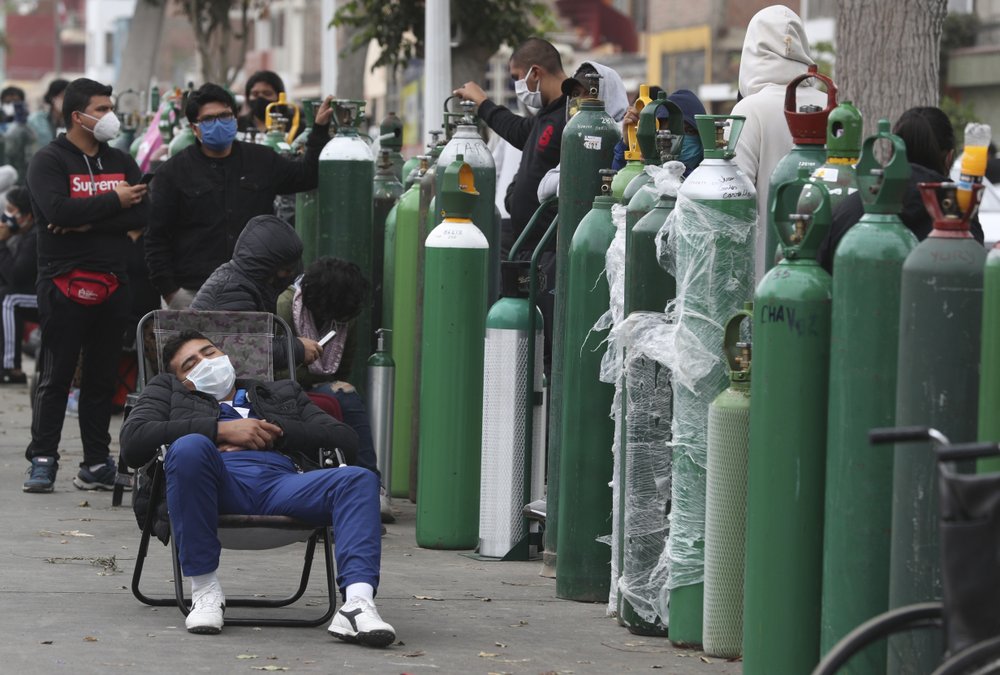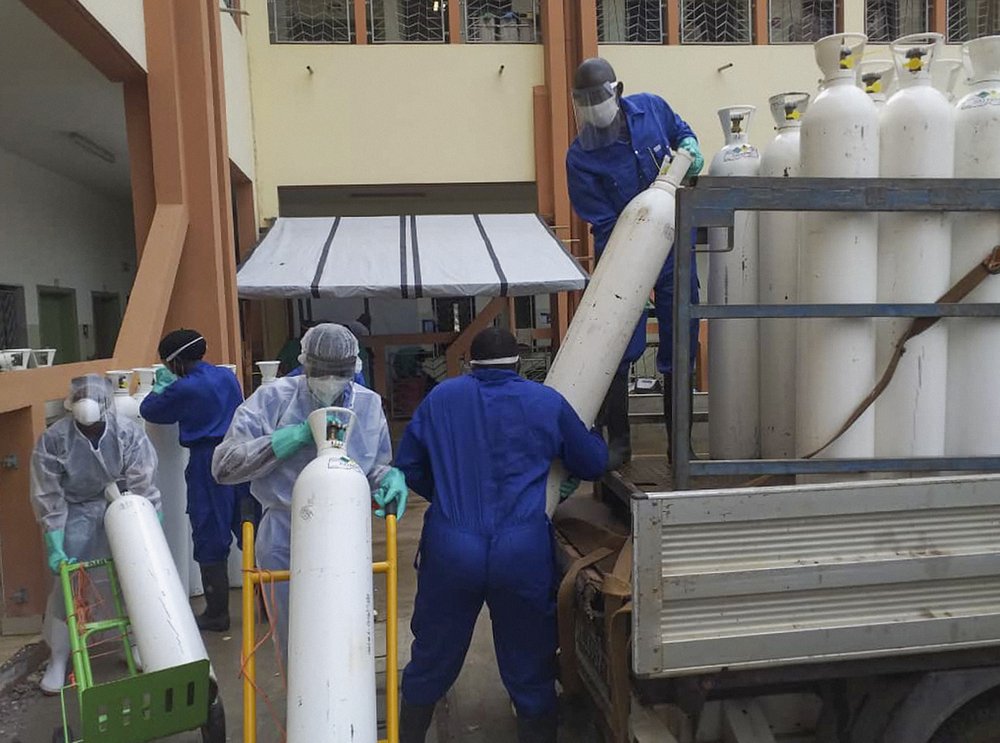As the coronavirus pandemic hits poorer countries with struggling health care systems, soaring demand for oxygen highlights a stark global truth: Even the right to breathe depends on money.
In wealthy Europe and North America, hospitals treat oxygen as a basic need, much like water or electricity. It is delivered in liquid form by tanker truck and piped directly to the beds of coronavirus patients. Running short is all but unthinkable for a resource that literally can be pulled from the air.

People wearing masks wait for hours to refill their oxygen tanks at a shop in Callao, Peru. /File photo from AFP
People wearing masks wait for hours to refill their oxygen tanks at a shop in Callao, Peru. /File photo from AFP
In Spain, as coronavirus deaths climbed, engineers laid 7 kilometers of tubing in less than a week to give a makeshift hospital with 1,500 beds a direct supply of pure oxygen.
But in poor countries, from Peru to Bangladesh, it is in dangerously short supply.
In Guinea, oxygen is a costly challenge for government-funded medical facilities such as the Donka public hospital in the capital, Conakry.
Outside the capital, in medical centers in remote villages and major towns, doctors say there is no oxygen to be found at all.

Medical workers offload cylinders of oxygen at the Donka public hospital where coronavirus patients are treated in Conakry, Guinea. /File photo from AFP
Medical workers offload cylinders of oxygen at the Donka public hospital where coronavirus patients are treated in Conakry, Guinea. /File photo from AFP
The World Health Organization (WHO) is hoping to raise over $250 million to help provide oxygen to poor and middle-income countries in South Asia, Latin America and other regions where hospitals are poorly equipped.
Organizations including the WHO, the United Nations Children's Fund (UNICEF) and the Bill& Melinda Gates Foundation began ordering oxygen delivery machinery in January, but within weeks the COVID-19 outbreak caused demand to surge, making it harder to get the machinery for some of the world's poorest nations.
Some companies can make "relative rugged equipment," but the rising prices and international flight restriction due to the pandemic complicates delivery, the New York Times said.
"So, unfortunately, there were 26 deaths, 70 percent of them in less than 24 hours," Dr Baweye Mayoum Barka, the charity's representative in Kinshasa, Congo, said. “I can't say they were all from a lack of oxygen, but it played a role.”
For many severely ill Covid-19 patients, only pure oxygen in large quantities can buy them time to recover. Also, oxygen is used to treat respiratory diseases such as pneumonia, the single largest cause of death in children worldwide.
Yet up until 2017, oxygen has not been on the WHO's list of essential medicines.
By a stroke of luck, in 2017, the WHO, UNICEF and the Bill& Melinda Gates Foundation began to seek ways to increase oxygen delivery to these poor regions to save lives of infants or children with pneumonia.
(With input from agencies)